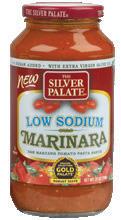








The holiday season evokes excitement, joy, and warmth. It is a time to connect with friends and family, enjoy good food, and embrace the cozy comforts of the season. Yet, it is also the time of the year when we are at our busiest with festive obligations—and with this flurry of activities can come an influx of stress.
In these busy times, it’s important to find balance. That’s why, in this issue of Live Naturally, you’ll find expert insights on effective ways to manage stress and improve the quality and duration of sleep.
And as we head into the colder months, it is not uncommon to experience feelings of loneliness or loss, which can weigh you down during the holidays. To help manage these
feelings, we share tips and remedies that aim to bring you comfort and connection and inspire you to cultivate joy and contentment as we wrap up this year and look forward to the next.

We also want you to enjoy the tasty offerings of fall and the joyous holiday season to the fullest. Find a healthy serving of heart- and soul-warming seasonal recipes in this issue of Live Naturally . Whether you are planning a cozy family gathering or a festive dinner, our tips and ideas will help you create unforgettable moments infused with seasonal magic.
Wishing you a stress-free holiday season and continued wellness!
—The Live Naturally team
Beef tenderloin with rosemary and thyme potatoes, 13
Kalleh Gonjeeshki, 14

Protein-rich chopped salad with peanut sauce, 15
Warm crunchy coleslaw with leeks and carrots, 15
Chai spice roasted pears with spiced granola crumble, 17
“Pumpkin pie” ice cream, 17

Chocolate-tahini and ginger sandwich cookies, 18
Mandarin orange chocolate almond cake, 19
Chard and ricotta stuffed turkey breast, 21
Winter holiday salad, 21
Quinoa stuffing, 22
Almond tamari stuffed mushrooms, 23


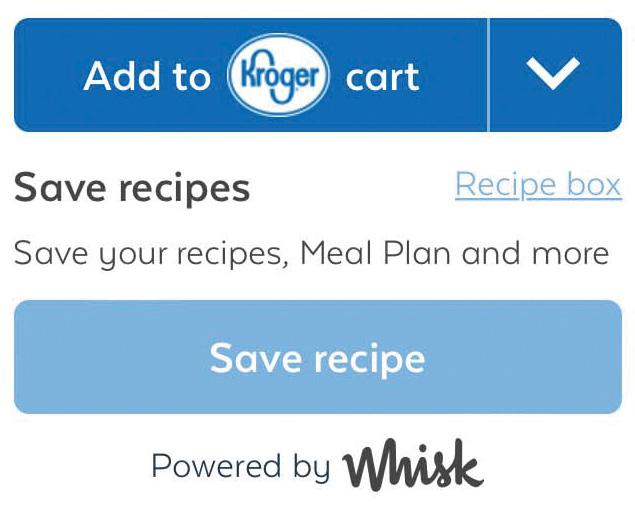

CEO & Group Publisher • Ryan Benn
Group Vice President, Publishing & Operations • Nina Wagner
CUSTOM PUBLISHING
Vice President, Custom Publishing • Brendan Harrington
Publisher, Live Naturally • Deborah Juris
EDITORIAL
Group Content Director, Editor-in-Chief • Tracy Peternell
Managing Editor • Melissa Curman
Senior Editor • Sandi Gauvin
Editor, CNHR • Bruce W. Cole
Editors • Laura Newton, Makena Wardle, Vibha Shukla
Managing Editor, Digital • Colleen Bryon
Digital Assistant • Michelle von Hahn
DESIGN
Group Creative Director & Photographer • Scott Yavis
Senior Graphic Designers • Lindsay Burke, Alvarro Pastorin, Iva Zima
PRODUCTION
Director of Operations
• Devin Steinberg
Production Associate • Natasha Jayawardena
SALES
Vice President, Sales • Ellen Wheeler
Sales Director • Gaby Sepulveda Knuth
Sales Coordinator, CNHR Advertising • Phileasha Gentry

Retail Account Executive, USA • Rebecca Randolph 603.525.3553
EDUCATION & ADMINISTRATION
Group Vice President, Education & Administration
Executive Assistant • Hannah Dewar
Manager, alive Academy • Julia Wagner
Manager, Academy Admissions • Jan Clay
FINANCE
• Jane Griffiths
Group Vice President, Finance • Conroy Ing, CPA, CMA
Senior Accountant • Maira Guzman
Accounts Receivable Specialist • Jacqui Harquail
PUBLISHED BY ALIVE PUBLISHING GROUP apg.alive.com
ADVERTISE WITH US advertise@alive.com
GET IN TOUCH editor@livenaturally magazine.com

US ADDRESS Alive Publishing Group Inc. 138-1733 H St, Suite 450, Blaine, WA 98230

HEAD OFFICE Alive Publishing Group Inc. 100-12751 Vulcan Way, Richmond, BC V6V 3C8
Phone: 604-295-9333 Toll Free: 800-663-6580 livenaturallymagazine.com @ livenaturallymag livenaturallymag livenaturalmag
ADVERTISING POLICY
Live Naturally accepts advertising based upon space availability and consistency with its mission to promote a natural health and wellness lifestyle. Live Naturally is not responsible for the content of advertisements, the products offered, or the viewpoints expressed therein.
EDITORIAL NOTE
The information provided in this magazine is for educational and informational purposes only. It should not be used as a substitute for the advice of a qualified and licensed practitioner or health-care provider. The opinions expressed here are not necessarily those of Alive Publishing Group Inc. or its affiliates or parent company. Different views may appear in future articles or publications. Articles in Live Naturally and Optimum Wellness are copyrighted and must not be reprinted, duplicated, or transmitted without permission. Four issues published per year.
With the holidays fast approaching and the never-ending to-do lists piling on, stress levels may be growing, with sleepless nights on the rise. If you are tired of being tired during the holiday season, this year, take control of your sleep schedule with these restful tips!
Waking up refreshed during the holiday season may seem like a far-off dream, but there are ways to make it a reality. Sleep plays a crucial role in many bodily functions, such as immune health, memory storage, brain function, and hormone regulation. Most adults should aim to get at least seven hours of sleep each night.
Some of these tips may seem difficult to implement at first, but all you need to
do is start! Begin by making small, attainable changes and build from there.
Put down the phone: blue light from electronic devices can negatively affect sleep duration and quality. Try to avoid looking at screens two to three hours before bed. Start by replacing a screen with a book 30 minutes before bed.
Reduce caffeine intake: while you may want to partner with a few cups of coffee to get through your holiday to-do list and
packed schedule, too much caffeine can leave you feeling jittery late into the night, making you more tired the next morning. Try to limit caffeinated beverages to just the morning and reach for caffeine-free options six hours before bedtime.
Increase movement: adding exercise to your routine can have a positive effect on sleep as it gives your schedule a structure while also combating holiday-induced lethargy. As a bonus, exercise can also be beneficial for reducing stress, as working out can release endorphins (a feel-good hormone).
Be consistent: waking up and going to bed at the same time every day can help you feel rested in the morning. Our bodies love consistency, and sleep is no different.
Establish a nighttime routine: having a system of habits before bed can signal the body to get ready for sleep. Figure out what your bedtime routine looks like and try to stick to it daily.


Try sleep aids: some natural sleep aids include melatonin, lavender, and teas with valerian root or chamomile. Talk to your doctor before taking any sleep aid or supplement.
During the holiday season, stress and sleep deprivation work hand in hand as they try to sabotage your holiday season. Seeing extended family, hosting, or traveling can all contribute to stress and take you away from the festivities. If stress leads to sleepless nights, try these activities to calm your mind, and hopefully, address the cause.
Meditation or yoga: embracing mindfulness can allow you to connect to your body and calm your spirit, even amid a flurry of festivities.
Participate in joyful activities: think of your hobbies or activities that bring you joy and help you feel renewed, and intentionally include them in your schedule. This season, try putting sleep at the top of your to-do list. By finding ways to reduce your stress, you can enjoy more of what the season has to offer.
Jessica Colon, RDN, LD, is a Kroger dietitian in Illinois, who loves to help her clients live healthier lives. She is often found traveling with her husband, hiking, reading, or sipping tea.SOUND FAMILIAR? At some middle-ish stage of our life, many of us find ourselves contemplating our journey—past, present, and future—in unsettling ways. According to Patricia Katz, a well-being strategist with expertise in midlife issues, “midlife malaise” is a very common experience. But it’s also—if we welcome it as a catalyst for renewal—a potentially exciting and revitalizing one. »

“Nothing excites me these days.”
“I wish I’d done things differently.”
“I miss my 25-year-old stamina.”
“I worry about aging.”
Midlife dissatisfaction routinely involves longing for what once was: flawless skin? tireless libido? Eliminating such longings might be impossible; however, we can minimize them by consciously appreciating what we’ve gained over decades of living.
What resources do you now have that your younger self lacked?
• Greater empathy or self-understanding?
• Better problem-solving skills?
• Job security and disposable income?
Celebrate those assets and consider how they might further enrich your life.
Looking to the past can also trigger regrets— about paths not taken or expectations not met. But here, too, we can adopt a more positive perspective. Patricia Katz encourages us to identify interests we may have “cast aside along the way,” and explore ways of (re)introducing those enthusiasms into our life.
While completing the fine arts degree you dropped in your 20s might no longer be feasible, could you …
• work or volunteer for an arts organization?
• take some continuing-studies courses?
• turn your lifelong passion for color into a regular activity or even a business?
As for unmet expectations about what our life “should” look like at certain age-related milestones, it’s helpful to remember that many of those widely held expectations stem from arbitrary historical and cultural forces. In other words, there is no natural law dictating that we must achieve certain goals by a certain age!
Fears about the future—health, finances, happiness—are another source of midlife malaise. But not only does brooding about the future (or the past) sabotage our enjoyment of the present, it also undermines the pleasure we might take in anticipating several more decades of passionate and engaged living.
Precautionary measures, such as staying up to date on recommended health checks or working with a financial planner, can, in addition to their practical benefits, help tame our worries. Equally powerful are exciting and ambitious plans for the future. If you knew for certain that you still had many decades of vibrant health and financial security ahead of you, what would you do? Is anything stopping you? Maybe that fine arts degree is feasible.
An excellent way of responding to midlife stressors is to remain as centered as possible in the here and now. A wealth of research, including studies focused on midlife, highlights the wideranging benefits of mindfulness practices.
Whether it’s meditation, or another activity that settles you in the present moment, such practices will boost your mood, reduce your stress, and very likely improve many aspects of your physical health, from cognitive flexibility to immune response.
Finally, if your midlife present seems bogged down in old routines—a phenomenon that, paradoxically, both bores us and heightens our sense of “time flying”—get creative with introducing novelty wherever you can. As Patricia Katz maintains, episodes of dullness are “a normal part of the ebb and flow of life,” and sometimes small tweaks are all that’s needed to rekindle our enthusiasm.
Heather Burt is a writer with global interests. Learn more at heatherburt.ca
Barry Petkau, a fitness trainer who specializes in third-age functional training, maintains that the most powerful reward of regular exercise for his clients in midlife and beyond is the transformative effects on mental well-being. In addition to its numerous physical benefits, exercise can improve our mood, lessen anxiety, reduce stress, and increase self-confidence.
Laboratory studies have found that plant phytonutrients like as allicin in aged garlic, resveratrol in grape skin, and curcumin in turmeric promote longevity.
Herbs
Research also reveals that many of the fresh herbs in the Mediterranean diet may contribute to a low incidence of age-related conditions like diabetes and Alzheimer’s disease. These herbs include oregano, rosemary, sage, and lavender
Aromatherapeutic uses of essential oils from these same Mediterranean herbs, as well as oils from thyme, chamomile, marjoram, jasmine, orange, sandalwood, and rose, are being studied for their potential to improve memory and reduce stress.
SUPPORTING A HEALTHY MIDLIFE … AND BEYOND
Healthy munching to satisfy your cravings
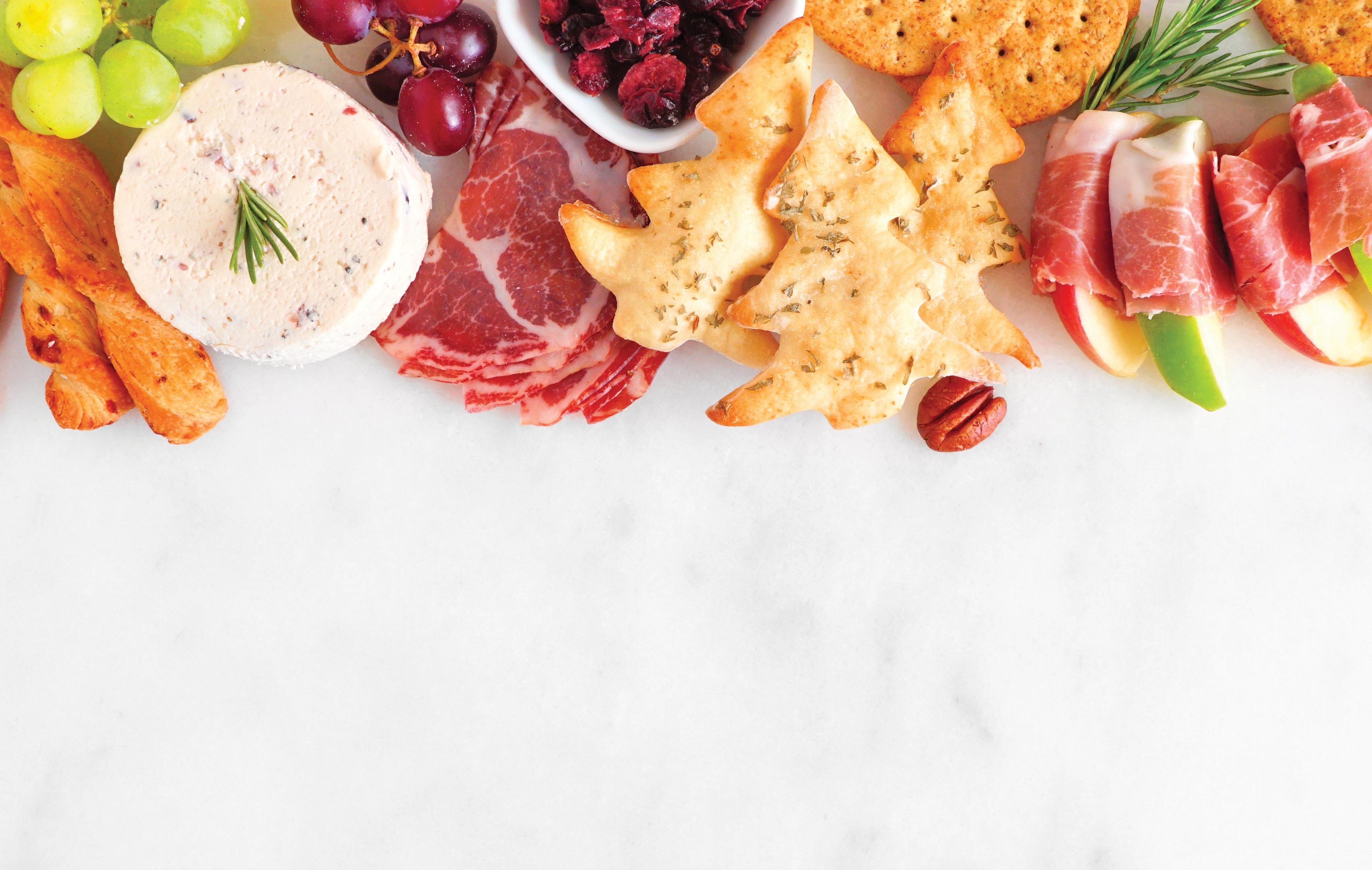
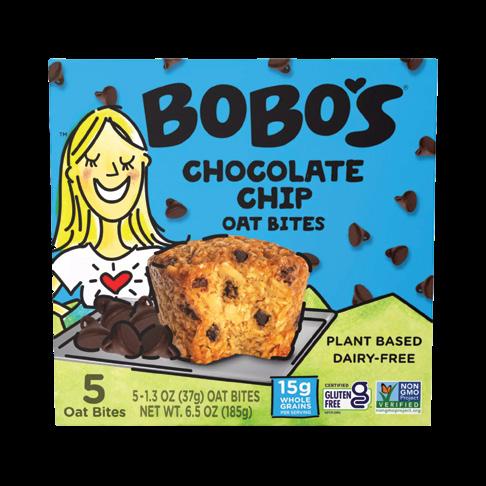
Made with simple ingredients you’ll find in your pantry, Bobo’s oat bites are great for snacking or as a small treat. These glutenfree, dairy-free, non-GMO, vegan, and kosher oat bites satisfy your hunger and your sweet tooth, keeping you satiated longer. Bobo’s Bites come in a wide variety of delicious flavors including Chocolate Chip, Apple Pie, Strawberry, Lemon Poppyseed, and Coconut, so you can enjoy big flavor with zero guilt.
Wonderful Pistachios are perfect for every occasion and taste bud. Each crunchy serving of Wonderful Pistachios contains all nine essential amino acids and 6 g of plant protein, making them a satiating onthe-go or at-home powerhouse snack. With a wide range of flavors and styles, including in-shell and no-shell options, you’ll be sure to find the right one of you.
Wonderful Pistachios are non-GMO, kosher, gluten free, and halal.


Lundberg Rice
Chips are made with organic grains and can be enjoyed with your favorite dips, as a salad and soup topping, or straight out of the bag. These crunchy brown rice chips are non-GMO, gluten free, kosher, and whole grain. Not only are they good for you, they are also good for the planet— Lundberg farms aim at protecting soil health and providing habitat for various species, and their manufacturing facilities use 100 percent renewable energy.
Bada Bean Bada
Boom is a vegan, non-GMO, glutenfree, and kosher snack. The main ingredient of this delicious plant-based snack is broad bean, also known as fava or field bean. Bada Bean Bada Boom is a roasted nutty superfood snack packed with up to 6 g of protein and fiber. Available in bold flavors like Sweet

Sriracha, Sweet Onion Mustard, Zesty Ranch, and Spicy Wasabi, it is perfect for snacking on-the-go or adding to your salad or soup.
High in beta-carotene and low in calories, Simple Truth Organic Baby Carrots are a crunchy and convenient addition to party platters, meal preps, and after-school snack packs. Baby carrots are naturally gluten free, vegan, and kosher and go well with soups, stews, and salads. Pair the versatile baby carrots with potatoes, leafy greens, guacamole, hummus, or any dips of your choice for quick and healthy snacks at any time of the day.



Enjoy fuss-free festivities with these holiday supports
Creamer

Effervescent Vitamin C Powder

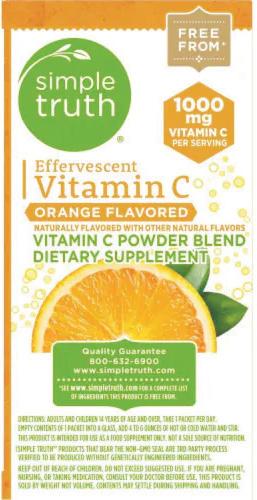
Overnight Oats
Chobani Coffee Creamer is made from farm-fresh cream that comes naturally from their yogurt-making process. Made with real milk, real cane sugar, and a simple list of six or fewer natural ingredients, Chobani Coffee Creamer makes every sip of coffee more delicious than the last. Chobani also offers non-dairy and oat-based creamers for a vegan-friendly and dairy-free indulgence.
Give your immunity a gift this holiday season with Simple Truth Effervescent Vitamin C Powder packets. Non-GMO Simple Truth Effervescent Vitamin C Powder packets are an excellent source of 10 vitamins and minerals, including vitamin C, manganese, and zinc. Empty one packet of the powder in a glass of hot or cold water to improve your energy metabolism whenever you feel fatigued.
Holidays come with a whirlwind of activities that might leave you with little time for breakfast. With ready-to-eat overnight oats from MUSH, all you need is a few minutes each morning to fuel your body. MUSH overnight oats can also be enjoyed as a snack or a quick pre/post-workout refill! MUSH is plant based, rich in protein and fiber, and free from gluten, dairy, artificial flavors, and preservatives. Made with clean and natural ingredients, MUSH is the perfect way to perk up your mind, taste buds, and body’s performance so that you can seize the day.

Unlock the power of your gut with Health-Ade. Known to regulate more than just digestion, your gut health impacts your mood, sleep, stress, immunity, blood sugar, and skin health—so a healthy gut means you can be your best self! Non-GMO, vegan, organic, and gluten free, Health-Ade kombucha is loaded with probiotics and detoxifying acids to boost your belly health. Health-Ade is conveniently packaged for you to enjoy on the go, as a post-workout refreshment, or when you need a little “you” time away from the hustle and bustle of the holidays.

 Kombucha
Kombucha

Share the joys of this season with your furry friends with nutritious and delicious treats from Shameless Pets. Turning excess produce into high-quality, upcycled treats, Shameless Pets is not only good for your pets, but also for the planet. These healthy and sustainable treats may offer several benefits for pet health, including improvement in digestion, bone health, breath, skin and coat, and calmness, and are made with soy-free, wheat-free, and corn-free ingredients.

Seventh Generation offers effective, safe, and bio-based products for your home. Formulated using renewable, plant-based ingredients, Seventh Generation Baby Wipes are clinically tested, hypoallergenic, and free of fragrances to protect your baby’s delicate skin. These thick, soft wipes can clean the biggest, toughest messes easily, giving you more time to focus on joyful moments with your little one.

Raw Organic Meal

Vitamin C Daily Brightening Cleanser
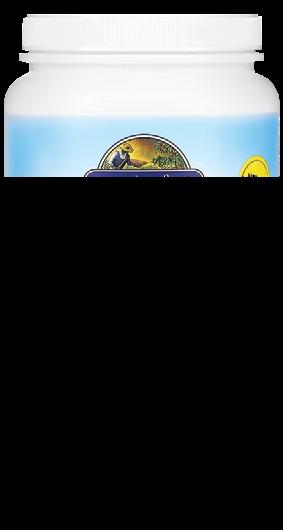
Raw Organic Meal is a delicious and nutritious on-the-go organic meal that helps you feel satiated throughout the day. It is a convenient organic shake packed with 44 superfoods, 20 g of plant protein, up to 7 g of fiber, and 18 wholefood vitamins and minerals. Now with an improved taste and texture, Raw Organic Meal is a non-GMO, gluten-free, and vegan meal replacement option, making it a crowd pleaser.

Boost your skin’s natural radiance with pH-balanced Derma-E Vitamin C Daily Brightening Cleanser. Formulated with licorice extract, green tea, glycolic acid, and pro vitamin B5, this facial cleanser shields and strengthens your skin’s natural moisture defenses while giving you a healthy, clean glow. It is 100 percent vegan, cruelty free, paraben free, sulfate free, mineral oil free, lanolin free, gluten free, and GMO free. This cleanser is effective in removing makeup, dirt, and oil, while assisting in balancing the skin’s pH.

ESSENTIAL ELECTROLYTES TO REPLENISH
NO HIGH FRUCTOSE CORN SYRUP, NO ASPARTAME, NO SUCRALOSE, NO RED DYES
REFRESHING, BOLD FLAVOR TO REWARD YOUR JOURNEY
80% LESS SUGAR THAN LEADING SPORTS DRINKS
A hero has emerged as the champion of hydration, so you have a fighting chance against thirst. Every 16-ounce bottle of Clear Cut Hero is packed with essential electrolytes of sodium, potassium, magnesium, and chloride. It tastes great with natural sweeteners of cane sugar and Stevia. Clear Cut Hero has only 25 calories, and contains no high fructose syrup, aspartame, sucralose, or red dyes.

Agatha Achindu’s Bountiful Cooking is a gift of good health for you and your family
Celebrate this holiday season with recipes from Bountiful Cooking, where Agatha Achindu shares culinary philosophies that present food as the ultimate expression of love and warmth. The fundamental principle behind Achindu’s recipes is reverence for food and life—much like the holidays themselves. So, make your festive gatherings wholesome with recipes bursting with flavor and nutrition.

SERVES 4
TENDERLOIN STEAKS AND SAUCE
1/4 cup chopped fresh flat-leaf parsley
3 Tbsp chopped fresh basil
1 tsp chopped fresh oregano leaves
3 cloves garlic, minced
3 Tbsp olive oil, divided
1/2 tsp grated
lemon zest
1 Tbsp fresh lemon juice
1/4 tsp crushed red pepper flakes
1 1/4 tsp sea salt, or to taste, divided
4 (4 ounce) beef tenderloin steaks, about 1 inch thick
1 tsp freshly ground black pepper
ROASTED POTATOES
1 1/2 pounds unpeeled Yukon gold potatoes, quartered
1 Tbsp olive oil
1 Tbsp finely chopped fresh rosemary leaves
1 Tbsp finely chopped fresh thyme leaves
1 tsp onion powder
1/4 tsp sea salt
1/4 tsp freshly ground black pepper
1. Preheat oven to 425 F. Line sheet pan with parchment paper.
2. For potatoes, in large bowl, toss together all ingredients, transfer to parchment-lined sheet pan, and bake until tender, golden brown, and crispy, 30 to 35 minutes, tossing after about 20 minutes.
3. Meanwhile, prepare sauce. In small bowl, stir together parsley, basil, oregano, garlic, 2 Tbsp of oil, lemon zest, lemon juice, red pepper flakes, and 1/4 tsp of salt, or to taste, then set aside.
4. When potatoes have about 8 minutes left, prepare tenderloin steaks. Use 1 tsp
of oil to coat the steaks, then sprinkle meat with 1/4 tsp salt each, or to taste, and pepper.
5. In large oven-proof skillet, heat remaining 2 tsp of oil over medium high heat. Add steaks and cook for 3 minutes on each side for medium rare, 130 F on a meat thermometer (or less or more, as desired). Allow to rest while potatoes finish roasting. Transfer to four plates or a platter and serve with potatoes and sauce. If you don’t want to turn on the oven, you can also roast potatoes using an air fryer at 350 F for 15 minutes, tossing halfway through cooking.
PER SERVING: 761 CAL; 43 G PROTEIN; 21 G FAT; 103 G CARB (9 G SUGARS); 781 MG SODIUM; 18 G FIBER

SERVES 6-8
1 pound ground beef
1 onion
1 1/2 tsp sea salt, divided 1/2 tsp garlic powder
2 Tbsp olive oil
1 tsp ground turmeric
3 Tbsp tomato paste
4 cups low-sodium chicken broth
3 cups chopped tomatoes or 1 (28 ounce) can diced tomatoes
2 or 3 medium carrots (about 1/2 pound), peeled and cut into 1 inch cubes
1/2 pound russet potatoes, peeled and cut into 1 inch cubes
1/4 cup chopped fresh flat-leaf parsley
1. Break ground beef into small pieces into large bowl and set aside.
2. Cut onion in half. Dice half of the onion and transfer to small bowl. Cut remaining half of the onion into 2 wedges. Dice 1 onion wedge and add it to diced onions. Grate remaining onion wedge using large holes of a box grater, and add it to the ground beef. Sprinkle 1 tsp of salt and garlic powder over ground beef and onions. Mix with your hands until fully combined and set aside.
3. Heat olive oil in a large Dutch oven over medium heat. Add diced onions and remaining 1/2 tsp of salt and cook, stirring occasionally, until translucent and starting to brown, 3 to 5 minutes. If bottom of the pot starts to turn dark, deglaze with little water.
4. Add turmeric and cook, stirring occasionally, until fragrant, about 30 seconds. Add tomato paste and cook, stirring often, until paste turns dark red, 3 to 5 minutes. Add chicken broth and tomatoes, and break up tomatoes a bit with wooden spoon. Bring liquid to a simmer over medium high heat.

5. Meanwhile, roll beef mixture into small meatballs,
using about 1 to 2 tsp of meat per ball. Gently place meatballs into the broth, cover, and simmer for 20 minutes over low heat.
6. Add carrots and potatoes to broth and simmer, uncovered, until vegetables are tender, 20 to 30 minutes more. Check seasonings and garnish with parsley.
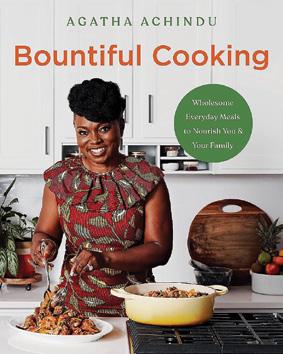

SERVES 4
PEANUT SAUCE
1/4 cup creamy peanut butter
3 Tbsp gluten-free rice vinegar
1 Tbsp maple syrup, or to taste
2 Tbsp fresh lime juice
2 Tbsp tamari or coconut aminos
1 Tbsp grated peeled fresh ginger
1 tsp toasted sesame oil
1/4 tsp freshly ground black pepper, or to taste
2 cloves garlic, minced 1/4 cup water
1/2 tsp crushed red pepper flakes (optional)
Sea salt
SALAD
3 cups finely shredded cabbage
1 cup shredded carrots
1 cup cooked chickpeas, drained; if using canned, drained and rinsed
1 cup chopped cucumbers
1 cup shredded jicama
1 cup diced red and/or yellow bell pepper
1/2 cup chopped toasted pecans
2 Tbsp chopped fresh basil
1. For peanut sauce, in small bowl, whisk together all ingredients up to the water. Whisk in 1 Tbsp of water at a time until the consistency is just pourable, about 1/4 cup total. Season to taste with red pepper flakes, if using, salt, and more black pepper. Set aside.
2. For salad, in large bowl, combine all ingredients. Drizzle the dressing over the salad and toss to combine.

SERVES 4 TO 6
3 Tbsp olive oil, divided
1 onion, thinly sliced
1/3 cup thinly sliced leeks, pale green and white parts
1 large carrot, peeled and julienned
5 cups thinly sliced green (aboutcabbage 1/2 head)
3 Tbsp apple cider vinegar
1 Tbsp maple syrup
2 Tbsp chopped fresh flatleaf parsley 1/2 tsp sea salt 1/4 tsp freshly ground black pepper
1. In large skillet, heat 1 Tbsp of oil over medium high heat.
2. Add onion and leeks and cook, stirring occasionally, until onion is translucent, about 5 minutes. Transfer to large mixing bowl, reserving the skillet.
3. Add another 1 Tbsp of oil to the skillet and reduce heat to medium. Add carrot and cook, stirring occasionally, until tender, about 3 minutes. Transfer to onion bowl, reserving the skillet.
4. Add remaining 1 Tbsp of oil to the skillet over medium heat. Add cabbage and cook, stirring constantly, until lightly wilted, about 3 minutes. Transfer to onion bowl, reserving the skillet.
5. Add vinegar and maple syrup to the skillet over medium heat, stir to combine until mixture starts to bubble, about 30 seconds.
6. Pour mixture over the slaw, add parsley, salt, and pepper and mix gently until thoroughly combined.
PER SERVING: 101 CAL; 1 G PROTEIN; 7 G FAT; 9 G CARB (6 G SUGARS); 178 MG SODIUM; 2 G FIBER
CLASSIC HOLIDAY TREATS WITH A HEALTHY TWIST

SERVES 4
CRUMBLE
1 cup quick oats
1/4 cup pecans, chopped
1/4 tsp cinnamon
1/8 tsp ground ginger
1/8 tsp ground cloves
1/8 tsp ground nutmeg (freshly ground nutmeg is amazing but not necessary)
1 Tbsp maple syrup
1 Tbsp coconut oil, melted
1/4 tsp vanilla
PEARS
1/2 cup brewed chai tea
2 ripe but firm pears, unpeeled, cut in half and cored
1 Tbsp cubed butter, or butter substitute
1 Tbsp brown sugar
1 tsp cinnamon
1. For crumble, preheat oven to 300 F. Line baking sheet with parchment paper.
2. In large mixing bowl, combine all ingredients and mix to combine. Spread oat mixture evenly over lined baking sheet. Bake for 25 to 30 minutes, giving it a light stir midway, until lightly golden. Let cool completely and store in airtight container until needed.
3. For pears, preheat oven to 375 F.
4. In small baking dish, pour chai tea, and place pears, cut side down. Divide butter and place around pears. Bake for 20 minutes, then gently turn pears over and spoon a small amount of liquid overtop. Bake for another 20 to 30 minutes.
5. While pears are baking, in small bowl, mix brown sugar and cinnamon together. With 5 to 10 minutes of cooking left, top pears with cinnamon sugar.
6. Serve pears warm, topped with granola crumble. Make it even more special with nondairy or regular cream, yogurt, or ice cream.
PER SERVING: 253 CAL; 4 G PROTEIN; 12 G FAT;
35 G CARB (14 G SUGARS); 24 MG SODIUM; 6 G FIBER
Recipe by Chelsea Gough
Double or triple this recipe and serve leftovers for a deliciously decadent breakfast. You’ll have them wondering what time it is—breakfast time or dessert time!
MAKES ABOUT 1 QUART | SERVES 8
1/2 cup raw, unsalted cashews
1/4 cup filtered water
2 probiotic capsules, or 1/2 tsp probiotic powder
2 cups almond milk
7 fresh Medjool
dates, pitted
2 cups cooked squash (such as kabocha, acorn, hubbard, or butternut) or 1 1/2 cups puréed cooked squash
1 1/2 tsp ground cinnamon
1/2 tsp ground ginger
1/2 tsp ground cloves
1/8 tsp nutmeg


1. In small bowl, mix cashews and water; add contents of the probiotic capsule (discarding the empty capsule shell) or probiotic powder, and mix well. Cover and let sit for 12 hours.
2. In a blender, combine cashew mixture with milk, squash, dates, cinnamon, ginger, cloves, and nutmeg, and blend until mixture is smooth. Pour into an ice cream maker and follow the manufacturer’s instructions. Serve immediately.
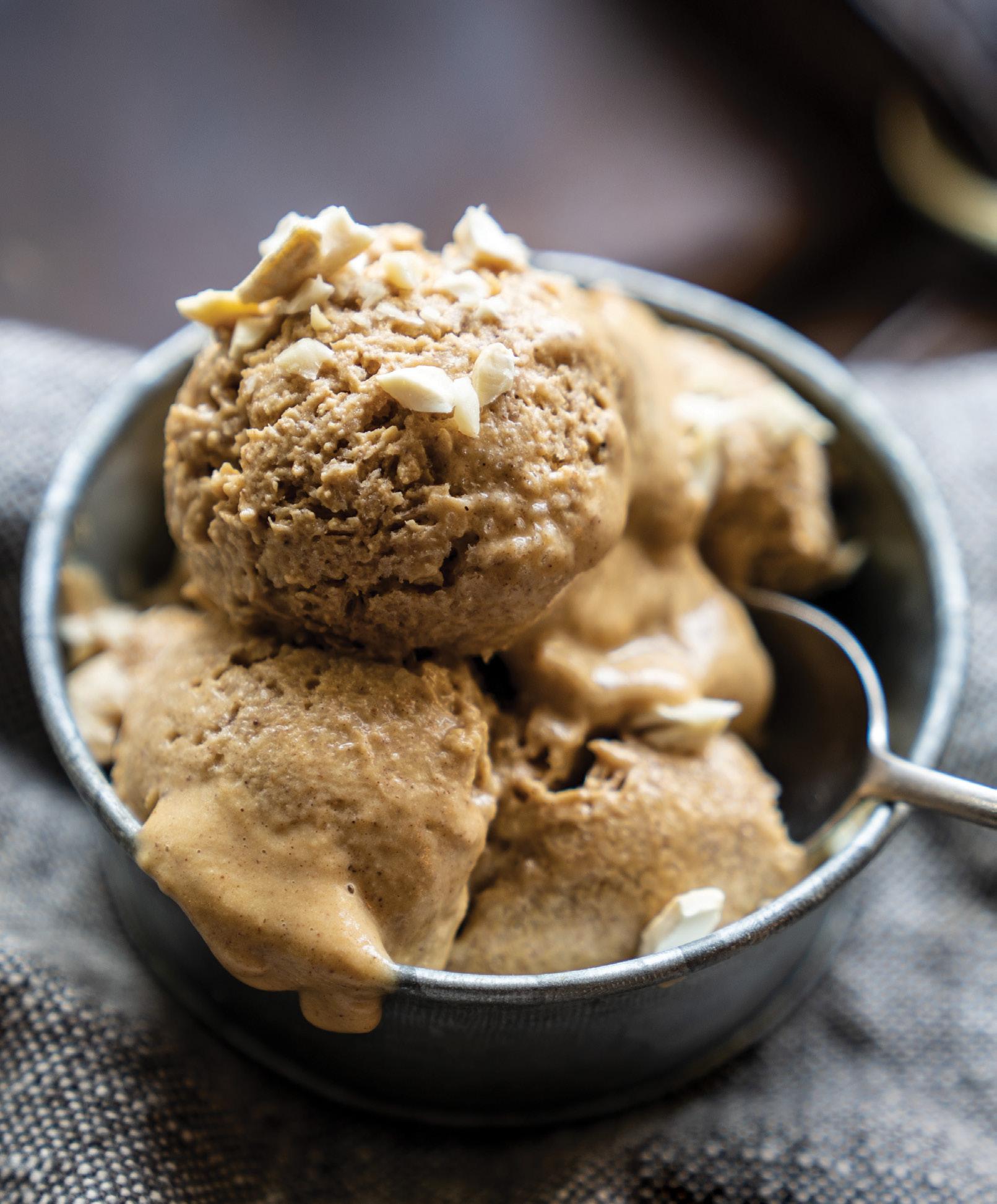
PER SERVING: 76 CAL; 2 G PROTEIN;
3 G FAT; 10 G CARB (6 G SUGARS);
94 MG SODIUM; 1 G FIBER
Recipe by Michelle Schoffro Cook, PhD, DNM Excerpted from The Cultured Cook by Michelle Schoffro Cook (New World Library, 2017)
THIS

SERVES 12
COOKIES
1/4 cup water
1 Tbsp ground flaxseed
1/2 cup coconut oil, melted
1/2 cup fancy molasses
1 tsp vanilla extract
2 cups dark or light spelt flour or gluten-free all-purpose flour
1/2 cup quickcooking, glutenfree rolled oats
1 Tbsp ground ginger
1 tsp ground cinnamon
1/2 tsp ground cardamom
1/4 tsp ground cloves
1 tsp baking powder
1 tsp baking soda
1/2 tsp salt
2 tsp black or white sesame seeds
FILLING
1/3 cup canned coconut milk
1/3 cup dark chocolate chips
1 Tbsp tahini
1 tsp vanilla extract
1/2 tsp ground ginger
1. For cookies, in small bowl, combine water and ground flaxseed. Set aside for 10 minutes. In large bowl, combine soaked, ground flaxseed and its water with coconut oil, molasses, and vanilla. In medium bowl, combine remaining dry ingredients except sesame seeds. Stir dry mixture into wet coconut oil mixture. Set aside for 10 minutes.
2. Preheat oven to 350 F.
3. Roll dough into 24 cookies. Tap cookies into sesame seeds to sparsely coat the top, and evenly space cookies on two large rimmed baking sheets. Gently press cookies with bottom of flat glass for cookies about 1/4 to 1/2 inch tall.
4. Bake cookies for 5 minutes, rotate pans (top to bottom, bottom to top), and bake for an additional 5 minutes, or until dry on top and cracked on the surface. Cool completely on wire rack.
5. For filling, in small saucepan, bring coconut milk to a boil. Immediately remove from heat and add chocolate, whisking until melted and combined. Whisk in tahini, vanilla, and ginger. Transfer to shallow bowl and chill until firm but pliable, about 30 minutes.
6. To assemble, vigorously whisk filling until smooth (let stand at room temperature for a few minutes if too cold). Spread filling on bottoms of 12 cookies; sandwich with remaining 12 cookies. Store loosely covered at room temperature for up to 3 days. PER
Use white chocolate instead of dark for a sweet, caramelized flavor that marries beautifully with ginger and tahini. And, if it’s handy, a grating of orange zest in the filling is tasty in both dark and white chocolate versions.
4 mandarin oranges, including
1 Tbsp zest (see tip)
3 Tbsp hemp hearts
1 cup almond flour
4 large organic eggs, yolks and whites separated
1/2 cup coconut palm sugar
1/2 cup raw cocoa powder
1 Tbsp orange zest or 1 tsp orange blossom water
1 Tbsp slivered almonds
1 tsp extravirgin olive oil, for garnish, plus additional for greasing pan
Pinch of large flake sea salt, for garnish
1. Preheat oven to 325 F. Line 8 inch springform pan with parchment and grease lightly with olive oil.
2. In small bowl, combine mandarin zest, hemp hearts, and almond flour and set aside.
3. Using stand mixer fitted with whisk attachment, beat egg whites on high until stiff and cloudlike. (They are done when the bowl can be held upside down over your head without the whites falling out.) Scrape whites carefully into another bowl and set aside.
4. To bowl of stand mixer, add egg yolks and sugar. Using paddle attachment, beat on high, scraping down sides of bowl once or twice. When sugar is dissolved and batter drops in ribbons from paddle, stop mixer and add cocoa powder and orange zest (or blossom water). On lowest setting, stir to incorporate, stopping mixer and scraping down bowl once or twice. Increase speed to medium-high and continue mixing until fully incorporated.
5. Remove bowl from mixer and add almond flour mixture in three lots, folding in slowly by hand using spatula. Now add reserved whisked egg whites, folding egg whites in slowly. (Note the texture difference between the fluffy egg whites and the more paste-like chocolate almond mixture.) Continue folding mixture gently until egg whites are mostly incorporated. The batter can be slightly lumpy.
6. Pour batter into prepared pan and bake for 30 minutes. Remove cake from oven and allow to stand for 5 minutes before releasing from the springform pan. Invert on plate and remove from pan. While still warm, arrange mandarin slices on top. Fill holes in the center of each mandarin wheel with a few slivered almonds, drizzle with olive oil, and sprinkle with sea salt. Serve immediately.

PER SERVING: 139 CAL; 8 G PROTEIN; 10 G FAT; 10 G CARB
(5 G SUGARS); 70 MG SODIUM; 3 G FIBER
Recipe by Helena McMurdo
MANDARIN TOP
Zest mandarins and reserve 1 Tbsp zest for use in the recipe. Set mandarins aside, leaving them unpeeled. When cake is baked, trim mandarins by slicing off top and bottom to form a flat edge. Then placing mandarin on the edge with peel, slice into 3 equal wheels. Repeat for each mandarin. Now, gently remove peel, being careful to keep wheels intact, and arrange on top of the cake, filling in holes with smaller sections trimmed from a wheel.

SERVES 8
3 cups chopped Swiss chard, washed and spun dry
1 Tbsp extra-virgin olive oil
1/4 cup finely chopped red onion
1 large garlic clove, finely minced
1/3 cup drained ricotta
Zest of 1 lemon
1/8 tsp kosher salt, plus extra 1/8 tsp ground nutmeg
1. For stuffing, blanch Swiss chard in large pot of boiling water for 2 minutes, or until wilted and soft. Drain well and set aside to cool. When cool enough to handle, squeeze out as much liquid as possible using your hands. Then place in food processor fitted with metal blade.
2. Heat oil in skillet. Add onion and garlic and sauté over medium heat, stirring often, until soft and clear. Do not brown. Transfer to food processor with cooked chard. Set aside to cool, about 5 minutes. Add cheese, lemon, and seasonings to processor bowl. Pulse together until mixture is finely minced.
3. For turkey, preheat oven to 400 F. To stuff turkey, remove skin from turkey breast and set aside. Open up butterflied turkey breast, top-side down, on cutting board. Spread chard mixture evenly over flattened turkey breast leaving at least 1 1/2 inch border around each edge. Roll up breast tightly and place seam-side down on cutting board. Take turkey skin and place overtop rolled breast. Smooth over breast to seal (it will not cover roll fully). Tie up with butcher string.
4. Place turkey roll in metal baking pan just large enough to hold it. Brush with 1 Tbsp oil or melted butter. Gently season with a little salt and pepper. Bake
Freshly ground black pepper, plus extra
1 1/2 to 2 lb free range, organic, boneless turkey breast, butterflied, skin on (see tip)
1 Tbsp extra-virgin olive oil or melted butter, plus extra if needed
1 Tbsp all-purpose flour
1 cup turkey or chicken stock
Dash of Worcestershire sauce
in 400 F preheated oven for 20 minutes to seal in juices. Then reduce heat to 325 F and roast until internal temperature on instant-read thermometer reads 165 F, about 40 minutes longer. Remove and transfer to platter. Cover with sheet of foil to rest while preparing sauce.
5. For sauce, place metal baking pan on stovetop. Scrape turkey drippings to loosen. Sprinkle with flour, and over medium-low heat, whisk flour into pan juices till crumbly. If too dry, add splash of olive oil. When flour is browned, gradually whisk in stock. Continue whisking over medium heat until thickened. Whisk in Worcestershire sauce and season with salt and pepper, to taste, if needed. Strain through fine-meshed sieve into serving container, such as a gravy boat.
6. To serve turkey, cut roll into 8 slices. Drizzle with a little sauce and serve with your choice of roasted vegetables.
PER SERVING: 158 CAL; 21 G PROTEIN; 6 G FAT; 3 G CARB (1 G SUGARS); 151 MG SODIUM; 0 G FIBER
Recipe by Irene McGuinnessTIP
Substitute spinach or beetroot greens for chard. Add any type of soft cheese, such as cream or goat’s cheese or feta, in place of ricotta.
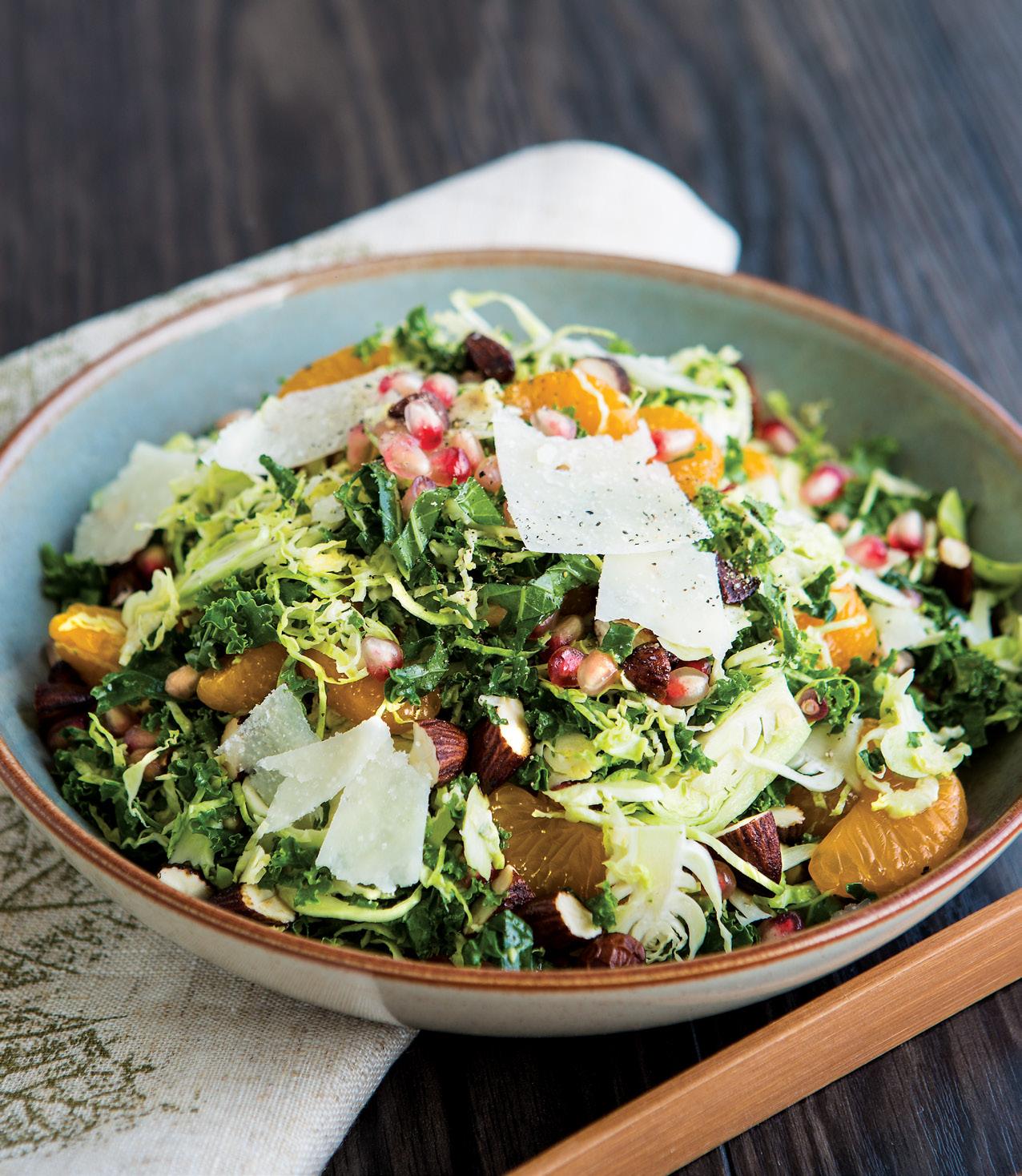
SERVES 8
1/2 cup natural almonds
2 Tbsp tamari sauce
1 Tbsp Dijon mustard
1 Tbsp liquid honey
1 Tbsp tahini
1 Tbsp orange juice
1 Tbsp lemon juice
2 Tbsp extra-virgin olive oil
1/4 tsp pepper, plus extra
2 Tbsp fresh chives, chopped
10 oz Brussels sprouts, trimmed
4 kale leaves, stemmed
3 mandarin oranges, peeled and segmented
1/3 cup
pomegranate seeds
2 Tbsp shaved
Pecorino Romano cheese, for garnish
1. In small bowl, stir together almonds and tamari. Add to frying pan and cook over medium heat, stirring often, until moisture has evaporated and pan is dry, about 6 to 10 minutes. Tumble onto a piece of parchment paper and let almonds cool completely before coarsely chopping.
2. In large bowl, whisk together mustard, honey, tahini, and orange and lemon juice until well combined. While whisking, slowly drizzle in olive oil until a homogenous sauce forms. Season dressing to taste with salt and pepper before stirring in chives.
3. Finely slice Brussels sprouts and kale leaves into thin shreds. Add to bowl and, using your hands, massage dressing into shredded greens until slightly softened, about 1 minute. Add mandarin segments, pomegranate seeds, and chopped almonds; toss to incorporate.
4. Transfer salad to large serving bowl and garnish with shavings of cheese and a grind of pepper. Serve right away or cover and refrigerate for up to 1 hour before serving.
PER SERVING: 134 CAL; 5 G PROTEIN; 8 G FAT; 13 G CARB (7 G SUGARS); 321 MG SODIUM; 3 G FIBER
Recipe by Lawren Moneta

SERVES 8
4 tsp grapeseed, divided
1 1/2 cups
tri-colored quinoa
2 1/2 cups
low-sodium vegetable broth
2 tsp dry sage
2 large sweet potatoes, cubed
4 peeled shallots, sliced in half
1/2 tsp salt
2 celery stalks, sliced
2 Bosc pears, ripe but firm, chopped 1/2 cup sliced pecans 1/3 cup dried cherries (optional)
2 Tbsp fresh thyme
2 Tbsp chopped fresh rosemary
2 Tbsp cider vinegar
1. In large saucepan over medium heat, heat 2 tsp oil. Place quinoa in pan and heat, stirring often, until it smells toasted. Add broth and sage to pan, bring to a simmer, reduce heat to low, and simmer covered until quinoa is tender and liquid is absorbed, about 12 minutes. Remove from heat and let stand, covered, for 5 minutes. Fluff quinoa with a fork.
2. Preheat oven to 400 F and place rimmed baking sheet in oven as it heats. Toss sweet potato and shallots with remaining oil and salt. Spread out on warmed baking sheet. Roast until sweet potato is tender, stirring once, about 20 minutes. When cool enough to handle, roughly chop shallots.
3. In large bowl, stir together quinoa, sweet potato, shallots, celery, pears, pecans, cherries (if using), thyme, and rosemary. Add cider vinegar and toss to combine.
EACH SERVING CONTAINS: 250 CAL;
6 G PROTEIN; 9 G FAT; 37 G CARB
(7 G SUGARS); 218 MG SODIUM;
6 G FIBER
TIP
Warming your pan in the oven as it preheats helps the vegetables roast as soon as they hit the hot pan to encourage better browning.
(Read: yum!)
Recipe by Matthew Kadey20 - 1 inch diameter mushrooms, such as cremini or portobellini
1 tsp + 2 Tbsp
extra-virgin olive oil
1/4 cup
raw almonds
1/2 medium onion
MAKES 20
1 1/2 Tbsp organic tamari, wheat- or gluten-free, if desired
1 Tbsp
balsamic vinegar
2 garlic cloves
1. Wipe mushrooms clean with damp cloth. Gently remove stems. Grease baking dish with 1 tsp olive oil, then place mushrooms stemless side up.
2. Preheat oven to 350 F.
3. Grind almonds in food processor until fine, then add remaining
ingredients and continue to process until smooth. Fill mushrooms with mixture.
4. Bake for 30 minutes. Serve warm.
EACH STUFFED MUSHROOM CONTAINS: 25 CAL;

HOVER FAST & FLAVORFUL | EAT
YOUR SMARTPHONE CAMERA
Recipe by Nicole Fetterly

Around the world, we’re getting older: the proportion of older adults in the population is steadily rising with the advances in modern medicine and technology. But improvements in the quality of life and the lived experience of growing older have not seen the same level of attention.

As we grow older, there is a decrease in various functional capacities within our bodies, including physical, visual, and mental functioning.
Paradoxically, studies that reviewed individuals’ perceived happiness over the life course suggest that older adults experience disproportionately high levels of life satisfaction and well-being compared to previous time periods in their lives.
That’s not to say that there aren’t challenges to be encountered, particularly with respect to aspects of cognition, such as decision making and memory.
Cognition exists in a conceptual hierarchy resembling a pyramid, starting with simple tasks and building in complexity.
It’s important to note that although growing older is associated with agerelated decline in cognitive functioning, not everyone experiences these changes in the same way. Some may experience few to no cognitive changes, while others may experience debilitating cognitive deficits, such as in those with Alzheimer’s disease. Emerging research provides some insights into the steps we can take toward maintaining high levels of cognitive function over the course of our life.
Executive functioning ability to do complex tasks that integrate aspects of previous layers, such as make decisions, navigate the public transport system, or prepare a multi-course meal
Elevate your cognition
Cognitive reserve refers to the resources that we build over our lives that provide a form of protection against age-related cognitive decline. If you think of this in relation to computers, your brain is the hardware and your cognitive reserve the software.
With outdated (or deteriorating) hardware, highly functioning software may be able to compensate for the hardware’s deficits. In the same way, if a person is experiencing neuronal loss (a physical deterioration), their cognitive reserve may be able to offset the brain’s deficits.
You can build up your own cognitive reserve by participating in certain types of activities that researchers have found to be associated with cognitive reserve:
• pursuing higher education
• exercising regularly
• pursuing leisure activities, particularly physically active ones
• learning a new instrument or language
Even small, incremental changes in lifestyle over time can have long-term impacts, so you don’t have to go from the couch to a marathon to reap the benefits. Starting with small activities and building up over time may help you build the cognitive reserve that puts you in a position to foster healthy aging in your own life.
TheodoreD. Cosco, PhD (Cantab) CPsychol is an Assistant Professor of Mental Health and Aging (Simon Fraser University) and Research Fellow (Oxford Institute of Population Ageing, University of Oxford).
ACETYLL-CARNITINE GINKGO BILOBA MAGNESIUM OMEGA-3 FATTY ACIDS VITAMIN B12 VITAMIN DMaintaining mental capacity as you grow older



























 BY LIVE NATURALLY EDITORIAL
BY LIVE NATURALLY EDITORIAL
Wistful thoughts of warm summer sunshine and long days of outdoor fun often crowd our minds during the colder winter days. But that feeling of longing isn’t unusual, or necessarily concerning. What is concerning, though, is when those feelings are constant and accompanied by symptoms like fatigue, weight gain, irritability, and sadness.
Seasonal affective disorder (SAD) is a type of depression that occurs during a certain time of year—most commonly during the long, dark winter months. Although its origin is not absolutely clear, SAD is commonly linked to a lack of sunlight.
While the cause of SAD isn’t currently known, research indicates that two neurotransmitters, serotonin and melatonin, may play a role in the disorder’s onset.
Serotonin, a “feel good” hormone, helps to regulate our moods. Low levels of light—as we experience during seasons with short days and long nights—are associated with lower levels of serotonin in our bodies. As serotonin levels lower, so does our mood.
On the other hand, low light levels are linked to an increase in melatonin, the hormone that saps our energy and helps us fall asleep at night. Those with SAD may produce more melatonin at night and into the early morning, leaving them feeling lethargic through the day.
Though millions are affected by SAD each year, research shows that it occurs more often in women than in men. Additionally, SAD is more common in people living farther from the equator, where there are fewer hours of daylight in the winter. It’s also known to run in families, who are affected by mental illnesses, such as depression.
SAD may be difficult to differentiate from other forms of depression because of the number of symptoms these forms share. But the common denominator is the timing of symptoms: on a cycle, appearing and then disappearing during specific seasons. For wintertime SAD, the symptoms can include:
• sadness
• irritability
• fatigue and lethargy
• social withdrawal
• loss of interest
• difficulty concentrating
• overeating and weight gain
Fortunately, there’s no need to muddle through the offending seasons, as treatment options do exist.
Conventional antidepressants such as selective serotonin reuptake inhibitors (SSRIs) can be effective for some people, but their numerous side effects mean they’re often used only as a last resort.
Shown to be just as effective as antidepressants for managing SAD symptoms with only minimal, if any side effects, light therapy can be taken in two forms: bright light therapy and dawn simulation.
As its name implies, this therapy involves exposing a patient to
DID YOU KNOW? SAD can also make the summer months the most hated season for some people. For a small but significant minority of people, the condition, referred to as summer SAD, can cause symptoms like loss of appetite, sleep problems, weight loss, and anxiety.
extremely bright lights, normally measuring 10,000 lux, for 30 or more minutes within the first hour of waking up (a sunny day is about 50,000 lux).
• Dawn simulation
Using longer exposure times and gradually brightening lights to imitate a natural sunrise, light exposure with dawn simulation takes place while the patient is sleeping.
While researchers aren’t entirely sure why light therapy works, it is thought to compensate for a lack of sunlight during the colder months. Bright light exposure has also been shown in some studies to increase our levels of serotonin while decreasing our levels of melatonin.
Negative ions—atoms that have gained an extra electron—have long been recognized for having a positive effect on our moods. Naturally, they’re created by sunlight, moving air, and water. However, they can also be created in devices known as negative ion generators. Not all ion therapies are equal, though. One study found that, while
nearly 50 percent of the people with SAD subjected to high-density ions showed significant improvement, only about 23 percent of those exposed to low-density ions had similar relief.
AND EXERCISE
Eating a healthy diet is important in managing SAD symptoms. Balanced meals rich in protein, complex carbohydrates, and healthy fats may help to keep unpredictable blood sugar levels—and the unpredictable moods that may accompany them—at bay. Exercise, meanwhile, can help relieve stress that may build up as a result of SAD and reduce feelings of fatigue. Furthermore, studies have consistently shown that exercise may significantly improve the moods of those with various forms of depression, including SAD.
• St. John’s wort*
A thoroughly researched natural antidepressant, St. John’s wort may help ease the symptoms of SAD. It works by affecting the brain’s uptake of serotonin, as well as two
SEE THE LIGHT! Lifestyle changes— including getting as much natural sunlight as possible— are important components of managing SAD symptoms. During cold, blustery winter days, how can we get enough sunlight?
Explore outdoor activity options
Find an outdoor activity that you love. Whether it’s walking, skiing, or shoveling snow off the driveway, both the exercise and the increased light may help to manage symptoms.
Just get outside! Get outside—even on a cloudy day.

The amount of light we’re exposed to is higher when we’re outside, even on days when the sky’s gray instead of bright blue. If you don’t have opportunities to get outside, try spending as much time as you can by windows.
other mood-controlling chemicals: dopamine and norepinephrine.
• Rhodiola rosea
Rhodiola, often used to help those with elevated stress, has also been shown to be an effective treatment for mild to moderate depression.
• Omega-3 fatty acids
Found in foods such as fish, flax, and nuts, omega-3’s anti-inflammatory effects may help relieve depression as well as other mood disorders.
• Vitamin D
Research shows that low levels of vitamin D may increase chances of showing depressive symptoms. While some evidence hints that increased levels of vitamin D may help to manage these symptoms, more research is needed to come to a definite conclusion.
• B vitamins
Some B vitamins—B9 (folic acid), B6, and B12—may also play a role in regulating our moods. Research is still evolving on the role of B-vitamin supplementation to help manage SAD and other forms of depression.


“As a 30-something-year-old woman and nutritionist (who’s not getting any younger), collagen has been one unique product that I have my eye on. Why collagen? Unfortunately, as we age, collagen density and dermal thickness decrease, and this lack of collagen cues the all-too-familiar signs of skin aging. No wonder we’re obsessed with trying to get more of it.

Admittedly, collagen has been a hot topic and for good reason. We all want to look younger, so a product that touts any sort of beauty benefits will no doubt come under a lot of scrutiny. In recent years there has been a growing body of evidence and even larger review studies that collectively point to the same conclusion – collagen supplements
promote healthier looking skin and decrease visible signs of aging, without any adverse side effects. Another concern that has been shared is that there may be a risk of contaminants and heavy metals in collagen. Although there is merit to this, the truth is that not all collagen supplements are created equally.
NATASHA PAROUTIS, NutritionistWhen choosing a collagen supplement that is bovine-sourced (cattle), it’s best to look for a product that is pasture-raised, grass-fed, and steroidal- hormone- and antibiotic-free. When choosing a marine-based collagen supplement, always look for one that is extracted from wild-caught and sustainably sourced fish, like whitefish.”




 – JULIE REIL, MD and Beauty Expert
– JULIE REIL, MD and Beauty Expert

“When it comes to feeling good and looking good, I am going to share my secret weapon… it is called Total Body Collagen. I take it with a vitamin C supplement in the morning for my hair, skin, nails, and bones, and it couldn’t be easier. With Total Body Collagen, my hair is thicker and healthier and I lose less hair in the shower and in my brush. Fine lines and wrinkles on my face are getting better as I age and my skin looks and feels more hydrated. My nails are stronger with fewer ridges and grow much faster. As an added bonus, Total Body Collagen supports my bone matrix for healthy teeth and bone density.”
Is collagen good for men?
Absolutely.
Does it help reduce the signs of aging?
Yes, collagen hydrates our skin, reducing wrinkles and giving us that plump youthful glow and healthy hair.

 BY CARIMÉ LANE
BY CARIMÉ LANE
If you’re looking to achieve relaxation and sound sleep, listen up! Sound therapy may help relieve stress, pain, and tension and increase spiritual well-being. It can also promote healing by sending you off to a sound snooze.
“Sound therapy uses sounds, special instruments, voice and/or music, which are then played for the client in therapeutic ways to achieve certain frequencies and promote holistic well-being,” explains May Globus, a certified sound therapist. During a sound therapy session, the client lies down with eyes closed and absorbs the sound frequencies created by the practitioner.
In Globus’s view, this therapy is both science and art, developed over the centuries. Sound therapists use instruments and modalities originating from Asian, Egyptian, and Indigenous cultures, like crystal bowls, gongs, drums, rattles, and tuning forks.

Some research shows that sound therapy can prompt the brain to operate at a brainwave pattern that promotes relaxation, lowers anxiety,
Fatigue can have a wide variety of causes. It can come from conditions like diabetes or other chronic illnesses, or from lifestyle habits like poor sleep management or stress. Consult your health care provider to eliminate any underlying conditions if you’re experiencing long-lasting and unexplained fatigue.
You may find the following supplements helpful in supporting a stressed and fatigued system.
and makes it easier to fall asleep more soundly. A small study also found that sound therapy that creates this brainwave state also creates three other chemicals associated with sleep: dehydroepiandrosterone (DHEA), cortisol, and melatonin.
Some research suggests that supplementing with melatonin can help with jet lag or issues with falling or staying asleep.
MAGNESIUM
If you want to experience sound therapy, Globus believes it’s best to start out by seeing a certified practitioner or by attending a group sound therapy session. During a session, some people will feel physical sensations, some will see colors, and for others, memories and scenes will come to mind.
Poor mood and elevated anxiety have all been linked to an increased incidence of disease, including diabetes. Sound therapy is one way to induce a relaxation response. The relaxation response includes lowered blood pressure and activation of the parasympathetic nervous system.
If you find this experience enjoyable, says Globus, you may want to visit a specialty store that carries sound therapy instruments. Look for the one that resonates with you, suggests Globus. Then, you can make it part of your nightly bedtime ritual. Sound therapy is also easily accessible through YouTube.
“Amazing practitioners from around the world upload videos of themselves playing bowls and other instruments,” says Globus.
Carimé Lane drifts to sleep on the scent of lavender essential oil drops on her pillow.
Magnesium can be found in nuts and leafy greens. If you’re not getting enough magnesium, you may have a harder time falling or staying asleep.
You can brew a cup of valerian dried root tea or ingest valerian in pill or liquid form for a sounder sleep.
A waft of lavender from an essential oil diffuser or a few drops of the oil on your pillowcase while tucking yourself in may help lower your heart rate, blood pressure, and skin temperature.
Passionflower is a type of climbing vine traditionally used by Indigenous North Americans for its calming properties.

SOLARAY SharpMind

NATROL Stress & Anxiety

VITACOST Neurolift Basic Multivitamin
VITANICA’S TASTY
Mood Tonic

NATURAL VITALITY Calm Magnesium Supplement



BAREORGANICS Superfood Water Enchancer
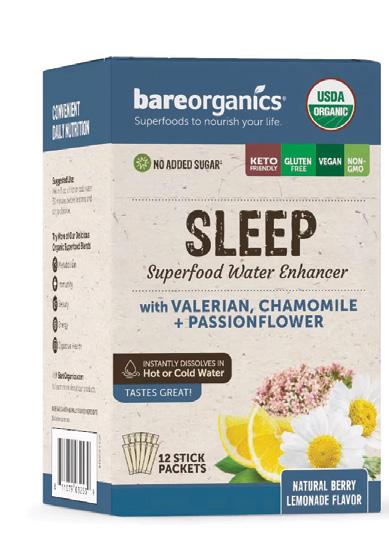
SCAN HERE TO ORDER THESE NATURAL SUPPLEMENTS ONLINE! vitacost.com is your source for natural, organic vitamins and supplements.

NATURAL FACTORS Adrenal Serenity
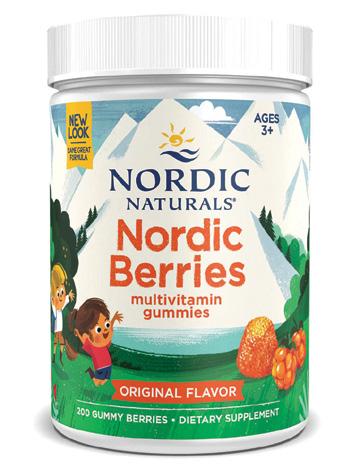


with bright, beautiful products designed to smell like sunshine and work like magic.
make the good fight









